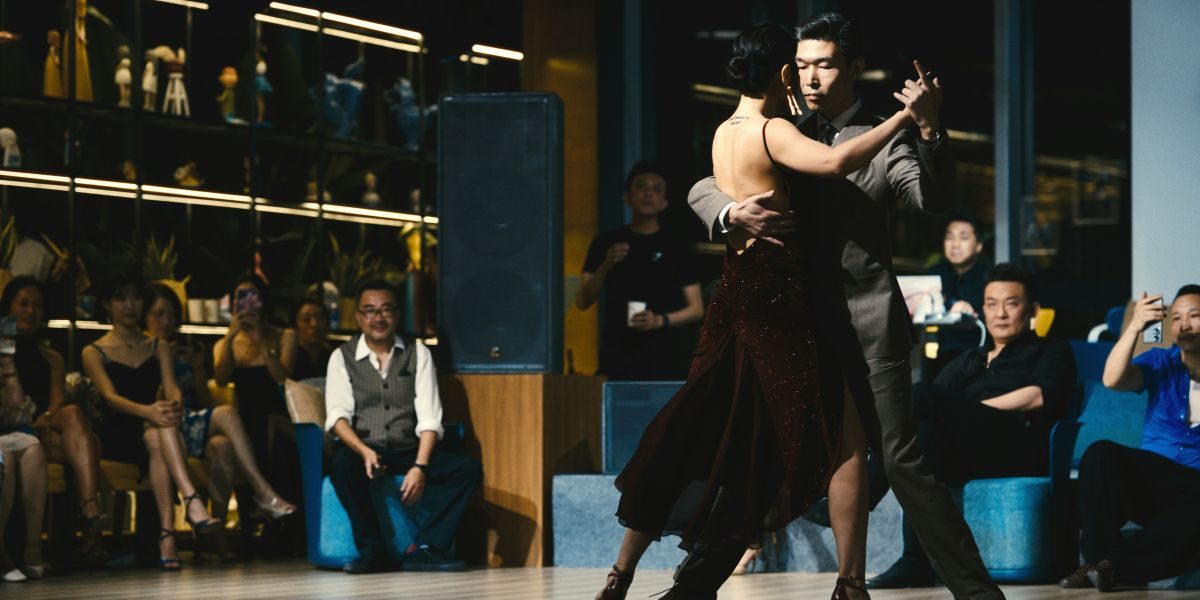Ballroom dancing is one of the most elegant forms of dance practiced worldwide. Blending rhythm, expression, and technique is more than just fancy steps; it’s a conversation between two people using movement that’s powerful enough to need no words. It’s a timeless way to move with purpose and connect with others through emotionally charged body language.
A Look at Ballroom Dancing
Brought to the world in 16th- and 17th-century Europe, ballroom dancing has evolved from couple dances in their living rooms to world-renowned dances heavily shaped by numerous global influences. What started as a fun pastime for couples and friends has evolved into a worldwide celebration of fun, excitement, and performance enjoyed by people of all ages, including men, women, and children.
Ballroom dancing encompasses many styles, each offering unique steps and movements for every dancer. The styles are divided into two main categories: Latin and International/American/Standard, based on the originating culture and the type of rhythm and movements involved.
International Standard Ballroom Dance Styles
International Standard is one of the dance styles that continues to have a significant following today. This elegant dance style emerged in Europe during the 19th and 20th centuries. As with other styles, International Standard dance has evolved, and slight variations in moves and steps may be seen depending on the dancer’s location.
International Standard ballroom dance emphasizes strong partnerships, good posture, and a strong connection between partners to execute performances that can be impressive to both small and large audiences.
Known for precise, structured techniques, the International Standard style includes five core dances:
- Foxtrot: Smooth and dramatic, that’s how Foxtrot dancers tend to step. Using a mixture of slow and quick gliding steps, the Foxtrot is danced in 4/4 time. Jazz and big band music often suit their style.
- Tango: Sharp and dramatic movements give the Tango a flair that many other dances might not have. Staccato movements, tense, prowl-like walks, and quick head snaps add emotion and attitude. Danced in 4/4 time, the Tango is slow-paced yet highly technical with sudden changes in direction.
- Viennese Waltz: A faster version of the original Waltz, the Viennese Waltz is not for everyone. It’s a challenging ballroom style that requires continuous movement, strong core control, and stamina.
- Waltz: Danced in ¾ time, the Waltz carries dancers across the floor in a continuous, circular motion. The dance emphasizes smooth, flowing movements. Of the five International dances, the Waltz is often the first one practiced by dancers. It opens their path to the world of International Dance.
- Quickstep: As the name suggests, Quickstep is fast, lively, and energetic. Dancers require quick footwork and playful movements to execute this dance style effectively. It’s danced in 4/4 time, requiring dancers to maintain clarity and a joyful, upbeat spirit. Many people find the Quickstep enjoyable to perform and watch.
Mastering the core dances above requires practice, patience, and dedication from a dancer with a strong frame who can emphasize posture, articulate smooth movements, and showcase precise footwork.
International Ballroom Dancing FAQ
International Standard Ballroom dance maintains a closed frame, unlike many other styles.
A strong connection with your partner is important for performing the International Standard fluidly. A seamless connection and bond can help ensure an elegant and sophisticated performance.
International Standard is a popular style of ballroom dance in competitions.
International dancers often wear elaborate gowns and full-tail suits. Ballroom shoes support movement and enhance comfort. Women typically wear closed-toe pumps with a heel that is 2″ to 2.5″ tall. Men’s dance shoes are usually Oxford-style leather shoes with a 1″ to 1.5″ heel.
Dancers use the entire dance floor during performances. Many other ballroom styles are confined to a smaller area.
Why Choose International Standard Dance Over Other Ballroom Styles?
The timeless appeal of International Standard Ballroom Dance continues to attract dancers, but is it the right style for you?
International Standard is ideal for individuals who appreciate smooth choreography, elaborate movements, and refined presentation. It requires a level of balance and footwork. It’s perfect for anyone who enjoys and understands nonverbal, physical connections with their partner.
The dance style might be right for you if you possess the following qualities:
- Endurance and stamina, especially for styles like Quickstep.
- Strong posture
- Core strength and excellent balance for smooth movements
- Precise footwork, smooth transitions
- Understanding music rhythm and how to express it through intricate movement
- Ability to work closely with a partner
- Sensitivity to body cues and emotions
- Attention to detail
- Focus and concentration
- Emotional expression
- Dedication
- Discipline
- Patience
If you lack any of the qualities above, there’s no need to panic or feel discouraged. Many dancers learn them as they start practicing with a qualified instructor.
Competition Ballroom Dance Style
Dancers interested in competing can find numerous International Standard competitions throughout the United States and worldwide. Dancers of various skill levels can participate in these frequent ballroom dance contests, presenting them with new challenges, skills, and opponents to test themselves against. All five International Standard dance styles are available at the competition level, with respected judges in every category.
Practice makes progress. Before dancers are ready for competition, they need plenty of practice with an instructor and on the dance floor. Experts estimate that around two years of weekly dance instruction with a qualified instructor is required before dancers excel enough to enter competitions.
Final Thoughts
International Standard Dance remains one of the more widely practiced styles of ballroom dancing. It’s perfect for high-energy individuals who enjoy flowing movements and intricate steps. People of all ages can enjoy the International Standard style. Why not take the opportunity to dance the night away on the ballroom floor? It could provide an exciting and fulfilling experience in your life.

















